- Economics
What's Behind the Numbers? allows authors to provide additional insight and an explanation into how they arrive at their conclusions. It consists of the data files, calculations, and other materials that inform the analysis but do not traditionally fit into an op-ed.
This is the statistical backup for the statements Edward P. Lazear and Simon Janssen made in their September 8, 2016 Wall Street Journal op-ed “Germany Offers a Promising Jobs Model.” Data are from the Current Population Survey and the factually anonymous Sample of Integrated Labour Market Biographies (version 1975 - 2014). Data access was provided via a Scientific Use File supplied by the Research Data Centre (FDZ) of the German Federal Employment Agency (BA) at the Institute for Employment Research (IAB).
Only about one-third of adult US population 25 and older have completed a bachelor’s degree. About 75% of Germany’s private-economy workforce1, meanwhile, has taken part in the country’s superb system of vocational training with apprenticeships. The closest the US comes is the associate arts degrees that are awarded by community colleges, but only about 5% of the American workers’ schooling ends in an AA degree.
Table 1: Education Level of Working Age Population

Table 1: Education level of working age population for Germany and the United States. Working age is defined as 25 years or older.
Source: CPS Data and factually anonymous Sample of Integrated Labour Market Biographies (version 1975 - 2014).
Although Germans are about half as likely to go to university, more than 85% of those without college have had vocational training and a formal apprenticeship.
1Sample consists of workers subject to social security contributions, thus excluding most public sector workers with a university degree and self-employed workers.
2This category includes all types of non-university vocational degrees, e.g. degrees for craftsmen and technicians.
3For the case of Germany, high school refers to workers who finished the German “Gymnasium” without a University or apprenticeship degree. Gymnasium is the highest of three basic school tracks and is comparable to a U.S. high school degree after 12 school years.
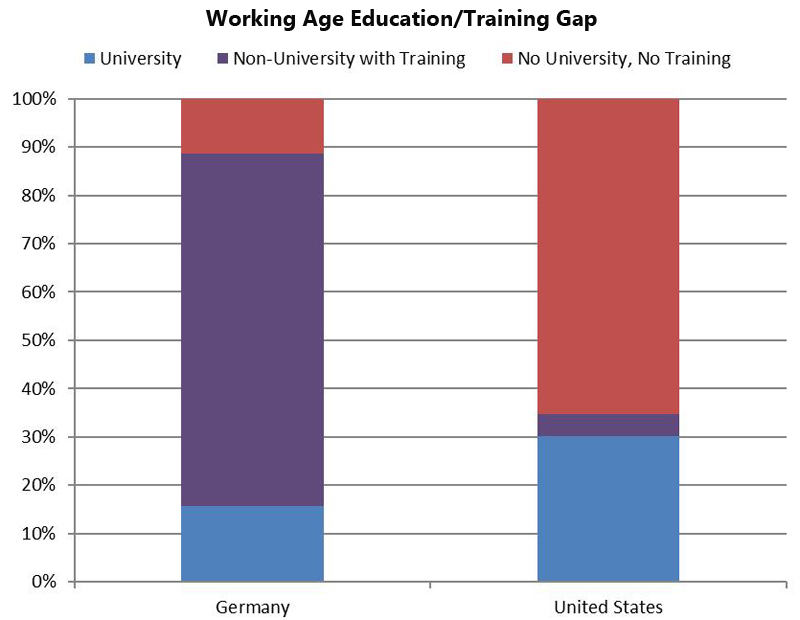
Figure 1: Education and training levels of the working age population in Germany and the United States. University includes college in the United States. Source: CPS Data and factually anonymous Sample of Integrated Labour Market Biographies (version 1975 - 2014).
In 2014, Germans with vocational apprenticeships earned about two-thirds of what those with at least a bachelor’s degree took in.
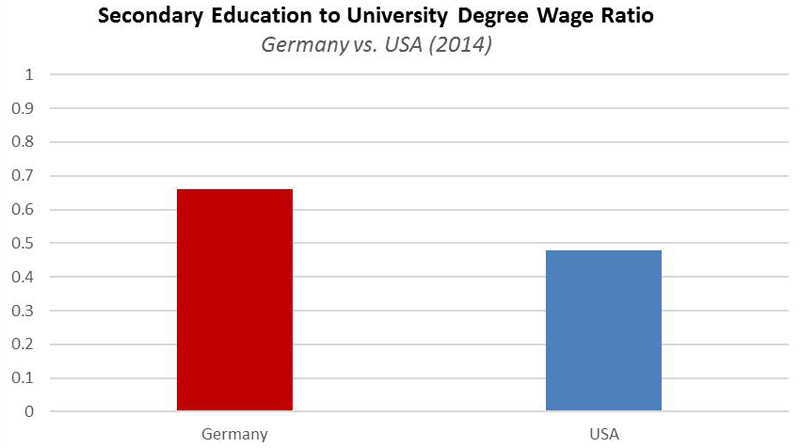
Figure 2: Ratio of wages for those with secondary education to those with at least university–level education in 2014. Note that secondary education may refer either to completion of only high school (USA) or to completion of only an apprenticeship program (GER). University includes college in the United States. Source: CPS Data and factually anonymous Sample of Integrated Labour Market Biographies (version 1975 - 2014).
Additionally, according to 2014 data—the latest available data for Germany—Germans with vocational apprenticeships earn over 90% of the average German wage; American high-school grads earn only 70% of the average American wage. In other words, Germans with vocational apprenticeships are about 30% better off than their American counterparts.
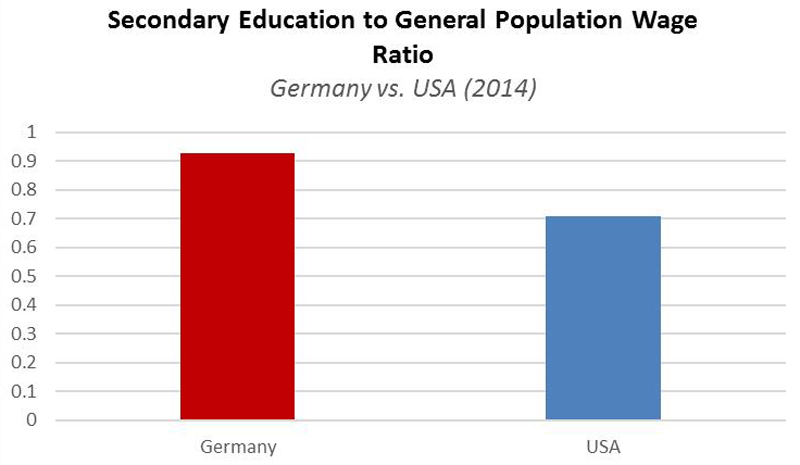
Figure 3: Ratio of wages for those with secondary education to the wages of the general working age population in 2014. Note that secondary education may refer either to completion of only high school (USA) or to completion of only an apprenticeship program (GER). Source: CPS Data and factually anonymous Sample of Integrated Labour Market Biographies (version 1975 - 2014).
Data shows this has been the case for nearly 15 years.
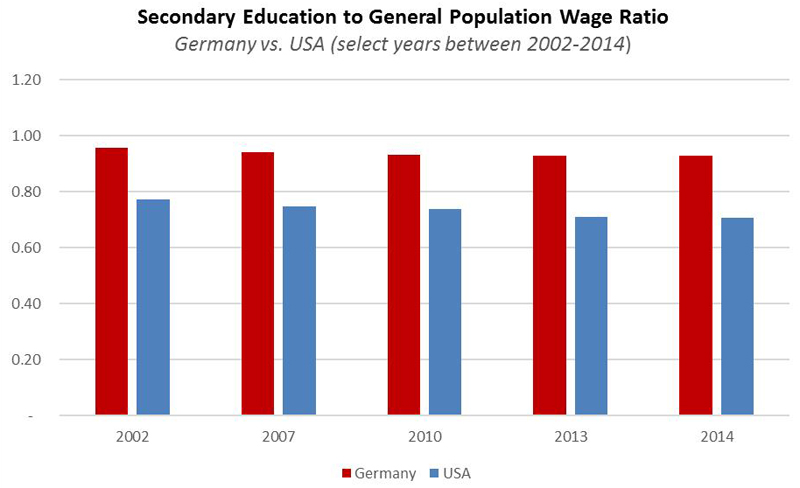
Figure 4: Ratio of wages for those with secondary education to the wages of the general working age population in 2014. Note that secondary education may refer either to completion of only high school (USA) or to completion of only an apprenticeship program (GER). Source: CPS Data and factually anonymous Sample of Integrated Labour Market Biographies (version 1975 - 2014).
The wage figures in manufacturing are virtually identical to those for the economy as a whole: American high-school grads in manufacturing earn 45% of their college-educated counterparts, while Germans with vocational apprenticeships earn two-thirds of their counterparts.
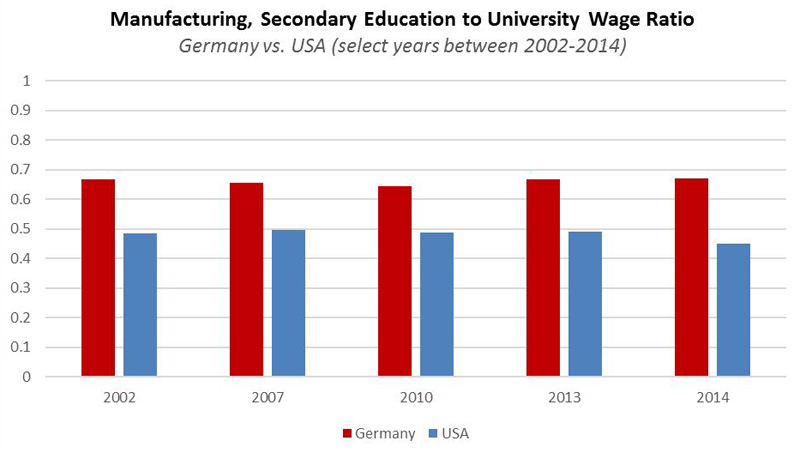
Figure 5: Manufacturing Sector only, ratio of wages received by those with only secondary education to those with at least a university-level degree, selected years. University includes college in the United States. Source: CPS Data and factually anonymous Sample of Integrated Labour Market Biographies (version 1975 - 2014).
While Germans with vocational training do well relative to university graduates, neither group has experienced much wage growth in the 2000s. But this doesn’t have much to do with trade: Earnings outside manufacturing have fared even worse than those in manufacturing—despite the latter being more affected by international commerce.
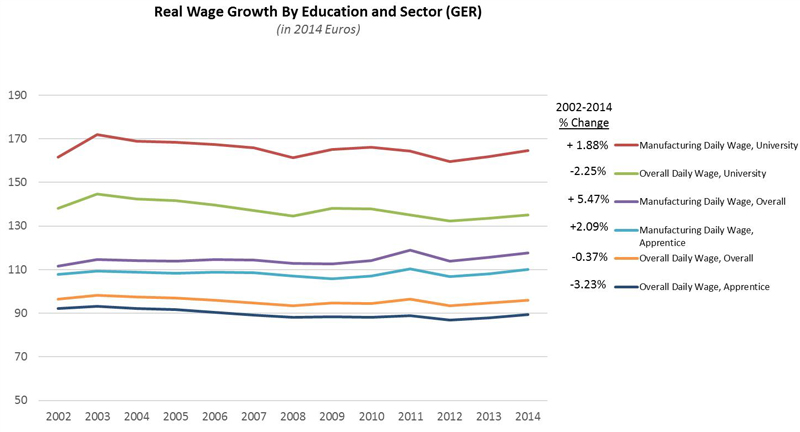
Figure 6: Daily Wages in 2014 Euros by Education Level and Sector in Germany, 2002 – 2014. Source: Factually anonymous Sample of Integrated Labour Market Biographies (version 1975 - 2014).






